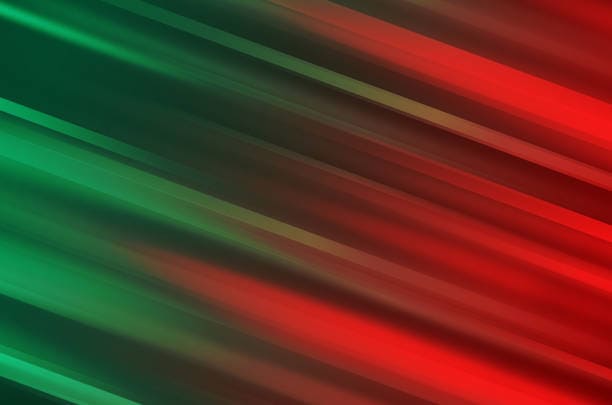Introduction
In the realm of color theory and design, the interplay between colors significantly influences perception, emotions, and decision-making. Among the vast spectrum of colors, red and green stand out as vibrant and evocative. In the United States, where color symbolism often reflects cultural nuances, the combination of red and green can elicit various reactions—ranging from festive cheer to cautionary signals. This article delves into the scientific principles underlying the association of red with green, exploring the psychological, cultural, and practical dimensions of this dynamic duo.
Understanding Color Theory
Color theory is a framework used to understand how colors interact and the effects they produce. The primary colors—red, blue, and yellow—combine to create secondary colors, while tertiary colors arise from mixing primary and secondary hues. In the RGB (Red, Green, Blue) color model, used in digital design, red and green are primary colors, and their combination produces yellow.
The color wheel is a visual representation of these relationships. Red is located opposite green, making them complementary colors. Complementary colors tend to create high contrast and vibrant visuals, making them effective in design. The emotional response to these colors varies significantly, influenced by individual experiences, cultural backgrounds, and societal norms.
Psychological Impact of Red and Green
Red: The Color of Action
Red is often associated with strong emotions—passion, anger, love, and urgency. Its visibility makes it a popular choice for warnings and signals. According to color psychology studies, red can increase heart rates and stimulate adrenaline, often prompting quick reactions. In marketing, brands use red to create a sense of urgency, encouraging impulse buying.
Green: The Color of Harmony
In contrast, green symbolizes nature, growth, and tranquility. It evokes feelings of calmness and reassurance, promoting relaxation and reducing anxiety. The association of green with nature stems from its prevalence in natural environments, reinforcing the idea of renewal and sustainability. Green’s soothing properties make it a favored choice in interior design and branding for products related to health and wellness.
The Power of Contrast: Why Red and Green Work Together
The contrast between red and green is visually striking, enhancing attention and engagement. This contrast is especially effective in marketing, where brands leverage the psychological impacts of both colors to capture consumer interest. For example, during the holiday season in the U.S., red and green dominate advertisements and decorations, symbolizing festivities and joy.
Table: Emotional Responses to Red and Green
| Color | Associated Emotions | Typical Uses |
|---|---|---|
| Red | Passion, urgency, excitement | Warnings, sales, promotions |
| Green | Calmness, balance, renewal | Health products, nature-related designs |
Cultural Significance of Red and Green in the USA
The meanings attached to colors can vary significantly between cultures. In the United States, red and green have established meanings, particularly in specific contexts:
- Holidays: The pairing of red and green is most prominently seen during Christmas. Red symbolizes the blood of Christ, while green represents eternal life through the evergreen trees, creating a strong emotional and spiritual connection.
- Sports: Teams often adopt color schemes that combine red and green to convey energy and teamwork. Fans wearing these colors not only show support but also foster a sense of community.
- Branding: Companies leverage the psychological and cultural significance of red and green to establish their brand identity. Fast-food chains, for instance, may use these colors in their logos to stimulate appetite (red) while conveying freshness (green).
Practical Applications: Where Red and Green are Used Together
Understanding the dynamics between red and green extends beyond marketing and design; it also impacts architecture, fashion, and art.
- Interior Design: In interior spaces, the combination of red and green can create a vibrant yet harmonious atmosphere. Designers often use these colors to evoke feelings of energy and comfort.
- Fashion: Designers incorporate red and green into seasonal collections, often during the holidays or spring collections, where the colors symbolize renewal and celebration.
- Art: Artists frequently explore the relationship between red and green, using their contrast to draw attention to focal points in their works. This interplay can elicit emotional responses and provoke thought.
Q&A: Common Questions About Red and Green
Q: Why do red and green evoke strong emotions?
A: Red triggers intense emotions such as passion and urgency, while green promotes calmness and reassurance. Together, they create a powerful contrast that can heighten emotional responses.
Q: How do cultural factors influence the perception of these colors?
A: Cultural associations, such as holidays or societal norms, significantly impact how individuals perceive colors. In the U.S., red and green are strongly tied to Christmas traditions, which enhances their emotional resonance.
Q: What are some effective design tips for using red and green together?
A: Use red and green in balanced proportions to avoid overwhelming the viewer. Incorporate neutral colors to create breathing space and ensure that the contrasting colors serve a purpose in the overall design.
Q: Are there any industries where red and green combinations are particularly effective?
A: Yes, the food and beverage industry often uses red and green in branding to stimulate appetite (red) while suggesting freshness and health (green). Additionally, the holiday retail industry capitalizes on these colors to evoke seasonal sentiments.
Conclusion
The combination of red and green serves as a powerful tool in color theory, psychology, and design. In the U.S., these colors evoke rich cultural connotations and emotional responses, influencing various aspects of daily life—from marketing strategies to holiday celebrations. Understanding the science behind the interplay of red and green allows designers, marketers, and individuals to harness their potential effectively. As we navigate the colorful world around us, recognizing the significance of color combinations can enrich our experiences and enhance our communication.

